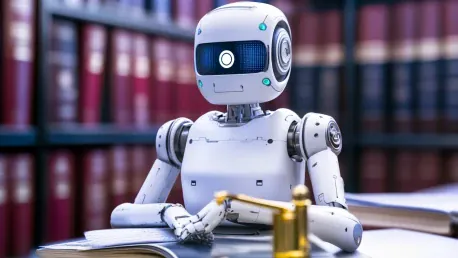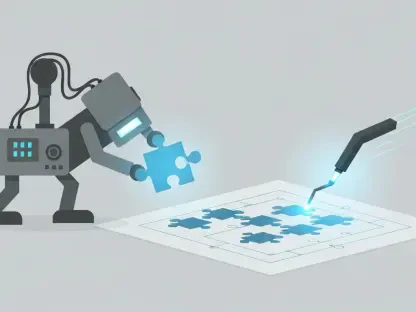In today’s fast-paced world, the demand for efficient legal assistance has never been higher. Creating a Legal AI Chatbot using open-source tools can significantly streamline legal processes, reducing workload and improving accuracy. This guide provides a step-by-step approach to developing an effective Legal AI Chatbot using bigscience/T0pp LLM, Hugging Face Transformers, PyTorch, and other open-source NLP tools. Through these comprehensive steps, one can build a scalable and reliable AI-powered legal assistant that not only understands legal text but also generates accurate responses to complex queries.
1. Initialize the Model
To get started on building the Legal AI Chatbot, we first need to load bigscience/T0pp, which is an open-source Large Language Model (LLM) available through Hugging Face Transformers. This model is well-suited for various text generation tasks, including answering legal queries. We begin by initializing a tokenizer for text preprocessing and subsequently loading the AutoModelForSeq2SeqLM, which will enable our model to generate text based on the given input.
from transformers import AutoModelForSeq2SeqLM, AutoTokenizermodel_name = "bigscience/T0pp" # Open-source and availabletokenizer = AutoTokenizer.from_pretrained(model_name)model = AutoModelForSeq2SeqLM.from_pretrained(model_name)Loading the model and tokenizer represents the essential first step in our journey to build an efficient Legal AI Chatbot. By leveraging the capabilities of bigscience/T0pp, the model will efficiently process legal texts, providing a foundation for the chatbot’s subsequent functionalities. This initialization allows the model to interpret and generate high-quality responses by understanding the context and content of legal queries accurately.
2. Preprocess Legal Text
Once we have the model loaded, the next crucial step is to preprocess the legal text. Proper text preprocessing is essential for achieving cleaner and more structured inputs suitable for NLP tasks. Here, we use spaCy, a powerful NLP library, combined with regular expressions to convert text into a format that our model can process efficiently. This involves transforming the text to lowercase, removing extra spaces and special characters, and filtering out stop words.
import spacyimport renlp = spacy.load("en_core_web_sm")def preprocess_legal_text(text): text = text.lower() text = re.sub(r'\s+', ' ', text) # Remove extra spaces text = re.sub(r'[^a-zA-Z0-9\s]', '', text) # Remove special characters doc = nlp(text) tokens = [token.lemma_ for token in doc if not token.is_stop] # Lemmatization return " ".join(tokens)sample_text = "The contract is valid for 5 years, terminating on December 31, 2025."print(preprocess_legal_text(sample_text))Through preprocessing, the text undergoes several transformations that ensure it is ready for machine learning and language model applications. By lemmatizing tokens and filtering out non-essential words, we retain only the most meaningful terms within the legal text. This preprocessing step enhances the chatbot’s ability to accurately interpret and respond to complex legal queries by providing it with clean and well-structured input data.
3. Identify Legal Entities
With the text preprocessed, we move on to identifying key legal entities within the text using spaCy’s Named Entity Recognition (NER) capabilities. Legal texts often contain numerous entities such as organizations, dates, and specific legal terms, which are critical for understanding the content and context. The NER function processes the input text and extracts these entities, providing a list of tuples that include the recognized entity and its category.
def extract_legal_entities(text): doc = nlp(text) entities = [(ent.text, ent.label_) for ent in doc.ents] return entitiessample_text = "Apple Inc. signed a contract with Microsoft on June 15, 2023."print(extract_legal_entities(sample_text))Extracting legal entities ensures that important components within the legal text are highlighted and categorized. This step is crucial for the chatbot to understand the specifics of the text better and provide relevant responses. By identifying and categorizing entities such as organizations, dates, and legal terms, the chatbot can handle more nuanced legal queries and deliver precise answers reflecting a deeper understanding of the text.
4. Embed Text
To create a more semantic understanding of legal documents, we need to generate numerical representations of the text. This is achieved using the MiniLM embedding model, which converts text into embeddings, i.e., dense vectors that capture the contextual meaning. Embeddings provide a way to compare different pieces of text and assess their similarity, which is fundamental for several NLP tasks, including semantic search and information retrieval.
import torchimport numpy as npfrom transformers import AutoModel, AutoTokenizerembedding_model = AutoModel.from_pretrained("sentence-transformers/all-MiniLM-L6-v2")embedding_tokenizer = AutoTokenizer.from_pretrained("sentence-transformers/all-MiniLM-L6-v2")def embed_text(text): inputs = embedding_tokenizer(text, return_tensors="pt", padding=True, truncation=True) with torch.no_grad(): output = embedding_model(**inputs) embedding = output.last_hidden_state.mean(dim=1).squeeze().cpu().numpy() # Ensure 1D vector return embeddinglegal_docs = [ "A contract is legally binding if signed by both parties.", "An NDA prevents disclosure of confidential information.", "A non-compete agreement prohibits working for a competitor."]doc_embeddings = np.array([embed_text(doc) for doc in legal_docs])print("Embeddings Shape:", doc_embeddings.shape) # Should be (num_samples, embedding_dim)Generating embeddings provides a numerical form of the text, essential for further processing and similarity measurements. By embedding legal documents, we prepare them for efficient retrieval and comparison, enhancing the chatbot’s ability to deliver relevant responses. This embedding step acts as a bridge between raw text data and more sophisticated machine learning applications, enabling the chatbot to understand and process complex legal information effectively.
5. Build Retrieval System
Creating a legal document retrieval system is the next step in our process. We use FAISS (Facebook AI Similarity Search), an efficient library for similarity search and clustering of dense vectors, to build our retrieval system. FAISS allows us to store and quickly retrieve relevant documents based on the similarity of their embeddings. By integrating the embeddings generated in the previous step with FAISS, we can perform fast and accurate searches.
import faissindex = faiss.IndexFlatL2(doc_embeddings.shape[1]) # Dimension should match embedding sizeindex.add(doc_embeddings)query = "What happens if I break an NDA?"query_embedding = embed_text(query).reshape(1, -1) # Reshape for FAISS_, retrieved_indices = index.search(query_embedding, 1)print(f"Best matching legal text: {legal_docs[retrieved_indices[0][0]]}")Building a retrieval system with FAISS significantly enhances the chatbot’s capability to find the most relevant legal document quickly. This system indexes the embeddings of legal documents, enabling efficient similarity searches. When a user enters a query, the system retrieves the most relevant text based on the similarity of its embedding to the query embedding, ensuring that the chatbot’s responses are both accurate and contextually relevant.
6. Develop Chatbot
Having set up the retrieval system, we now focus on developing the actual chatbot that will generate responses to legal queries. The chatbot function leverages our pre-trained language model to handle user queries. By tokenizing the input query and feeding it into the model, we generate responses that are then decoded into readable text.
def legal_chatbot(query): inputs = tokenizer(query, return_tensors="pt", padding=True, truncation=True) output = model.generate(**inputs, max_length=100) return tokenizer.decode(output[0], skip_special_tokens=True)query = "What happens if I break an NDA?"print(legal_chatbot(query))Developing the chatbot involves defining a function that interacts with the language model to provide human-like responses. The function processes the user input by tokenizing it, generating a response using the model, and decoding the generated text. This step integrates all previous processes, culminating in a functional Legal AI Chatbot capable of understanding and responding to legal inquiries.
7. Test Chatbot
In our modern, fast-paced environment, the need for efficient legal support is at an all-time high. Developing a Legal AI Chatbot using open-source tools offers a way to streamline legal processes, reduce workloads, and enhance accuracy. This comprehensive guide walks you through building an effective Legal AI Chatbot, utilizing bigscience/T0pp LLM, Hugging Face Transformers, PyTorch, and other open-source NLP tools. By following these detailed steps, you can create a scalable and dependable AI-powered legal assistant. This chatbot will not only comprehend legal terminology but also provide precise responses to intricate legal queries. Such advancements are crucial in today’s demanding legal landscape, offering both professionals and clients an efficient and reliable means of handling legal tasks. Using cutting-edge technology, you can significantly improve the efficiency and effectiveness of legal services, paving the way for more streamlined operations in the legal field.









